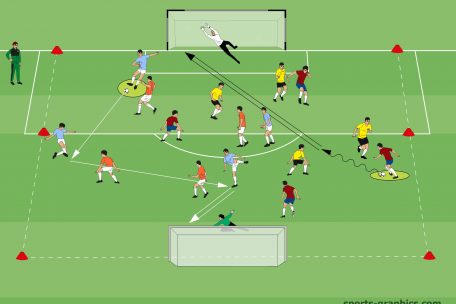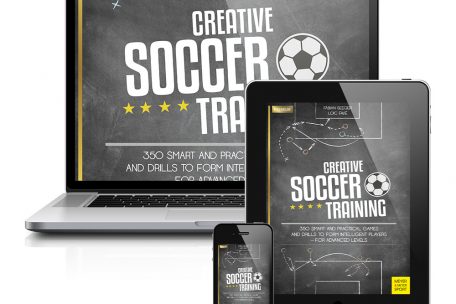Many coaches associate the 4 vs 4 drill with youth soccer. A clear situation, a close distance towards the goal... Read More
Creative Soccer Training
This book is considered a sequel to the book The Soccer Games and Soccer Drills Compendium. 350 Smart and Practical Games and Drills to Form Intelligent Players–For Advanced Levels, published in 2016, and its content and quality build on that of its prequel. At the fore in The Soccer Games and Drills Compendium is fundamental training content such as passing, dribbling, shots on goal, feints, juggling, and dueling. Additional key subjects are transitioning and reacting, chaos and action, different ways to start a game, active defense, tournaments, tactical exercises, and athletics.
·
Offensive transition actions Chasing and Capturing includes training exercises to improve individual and group tactical defensive behavior with the goal... Read More
Peter Schreiner introduces: Highly Recommended – A Collection of Excellent Drills 350 Smart and Practical Games to Form Intelligent Players... Read More




